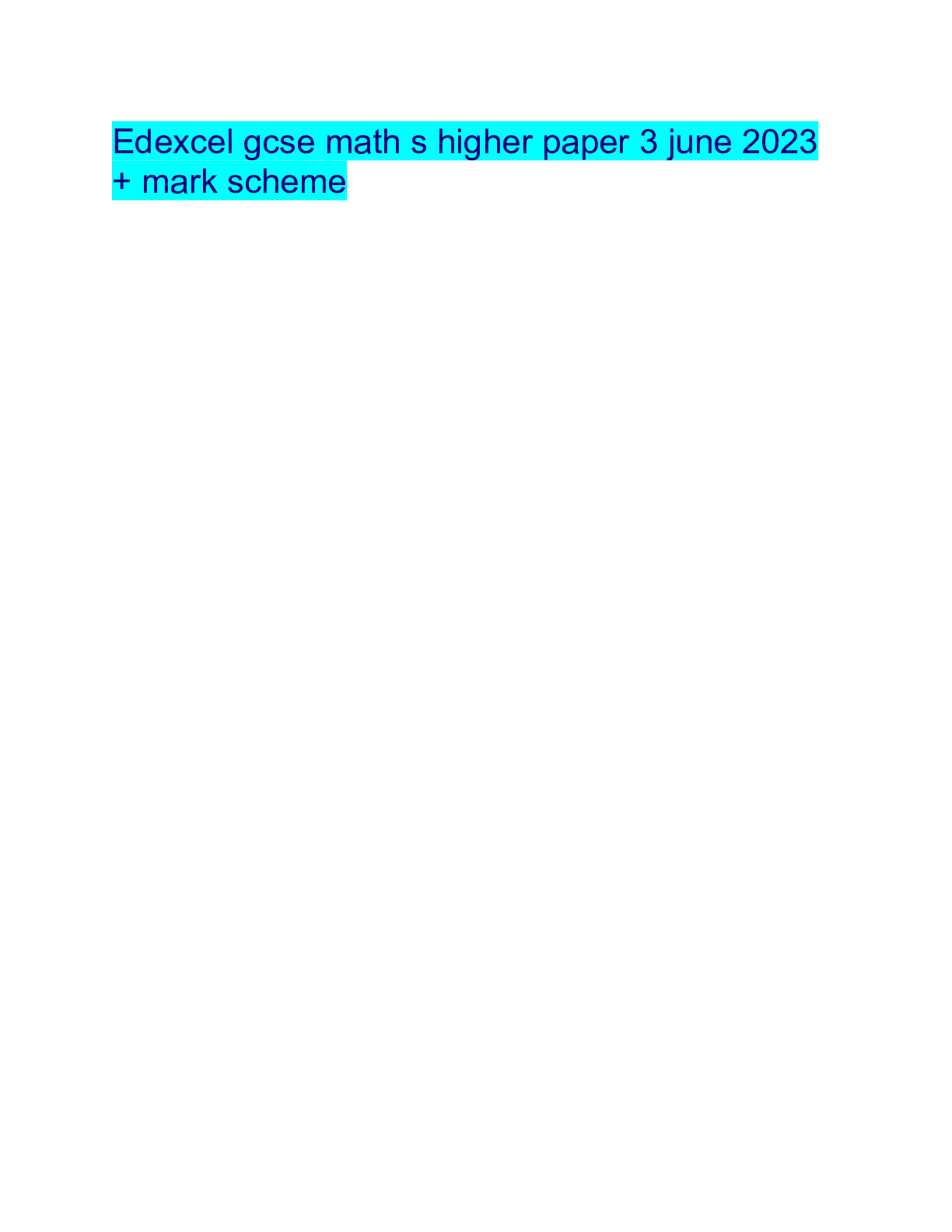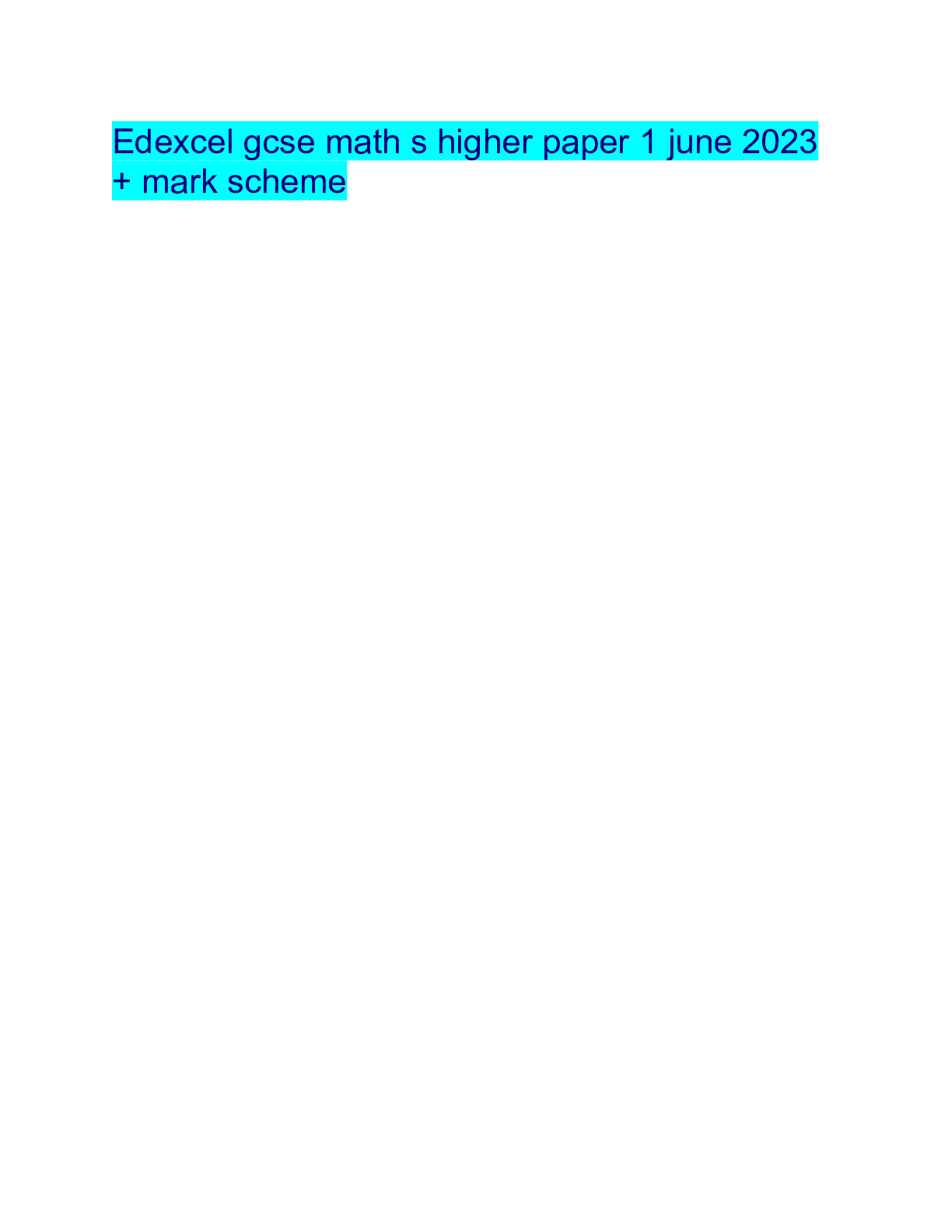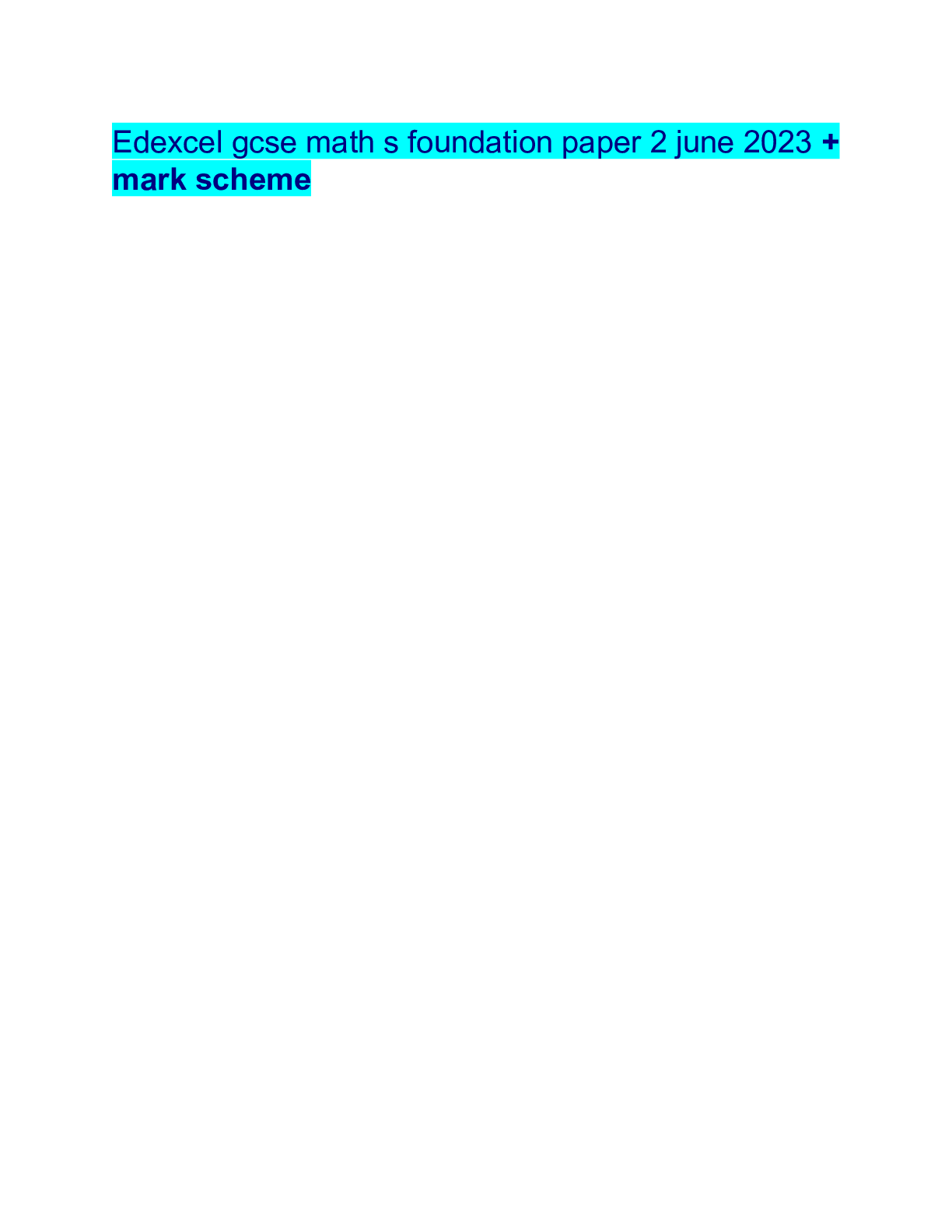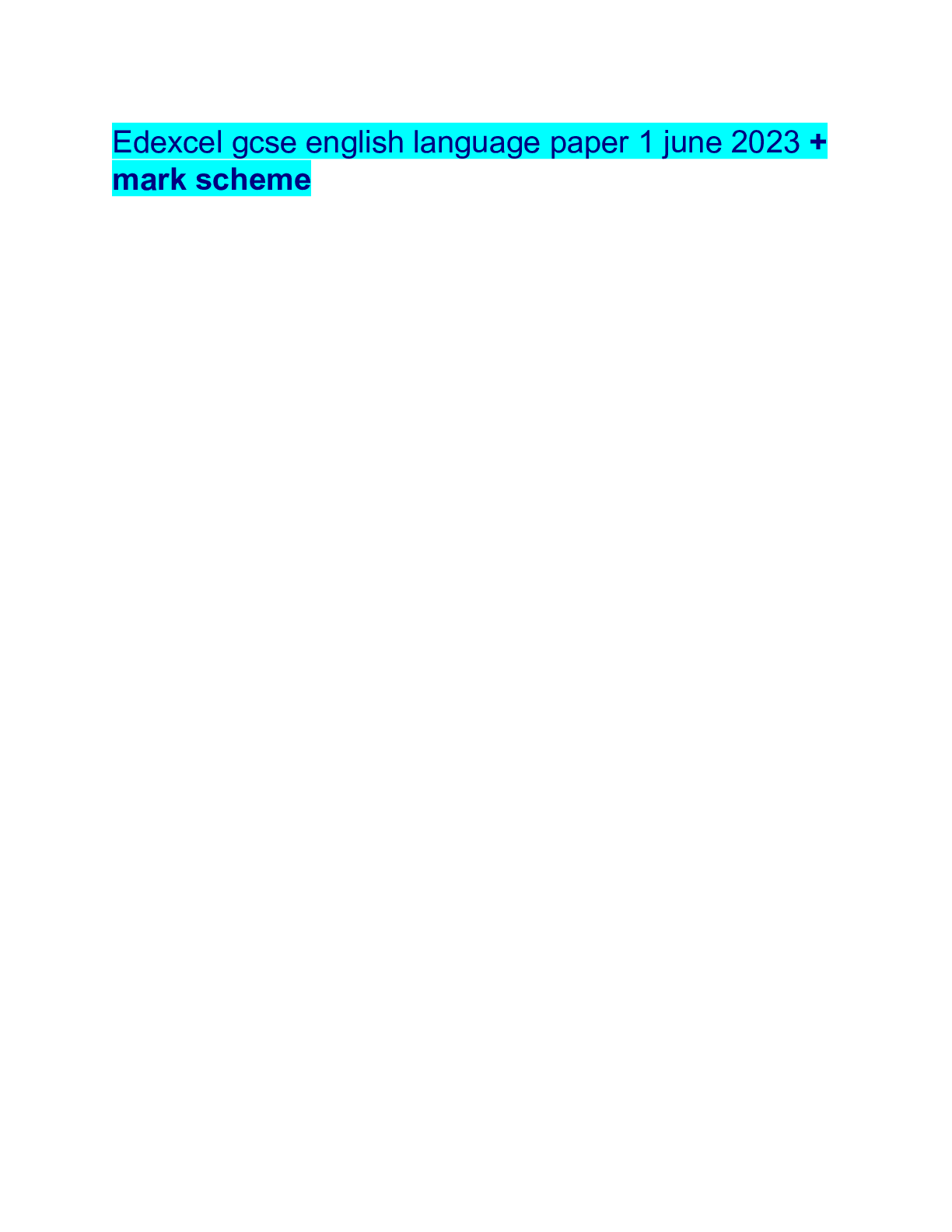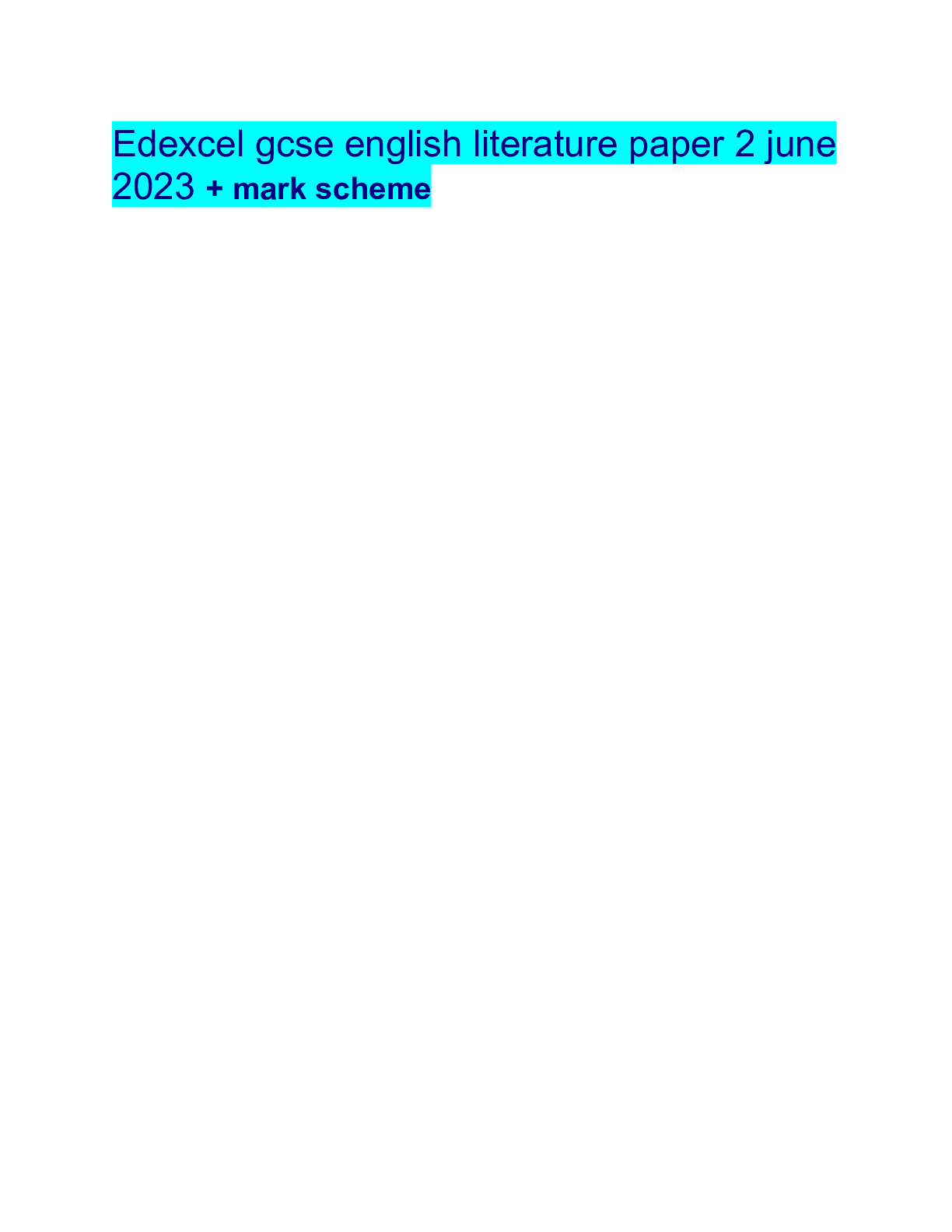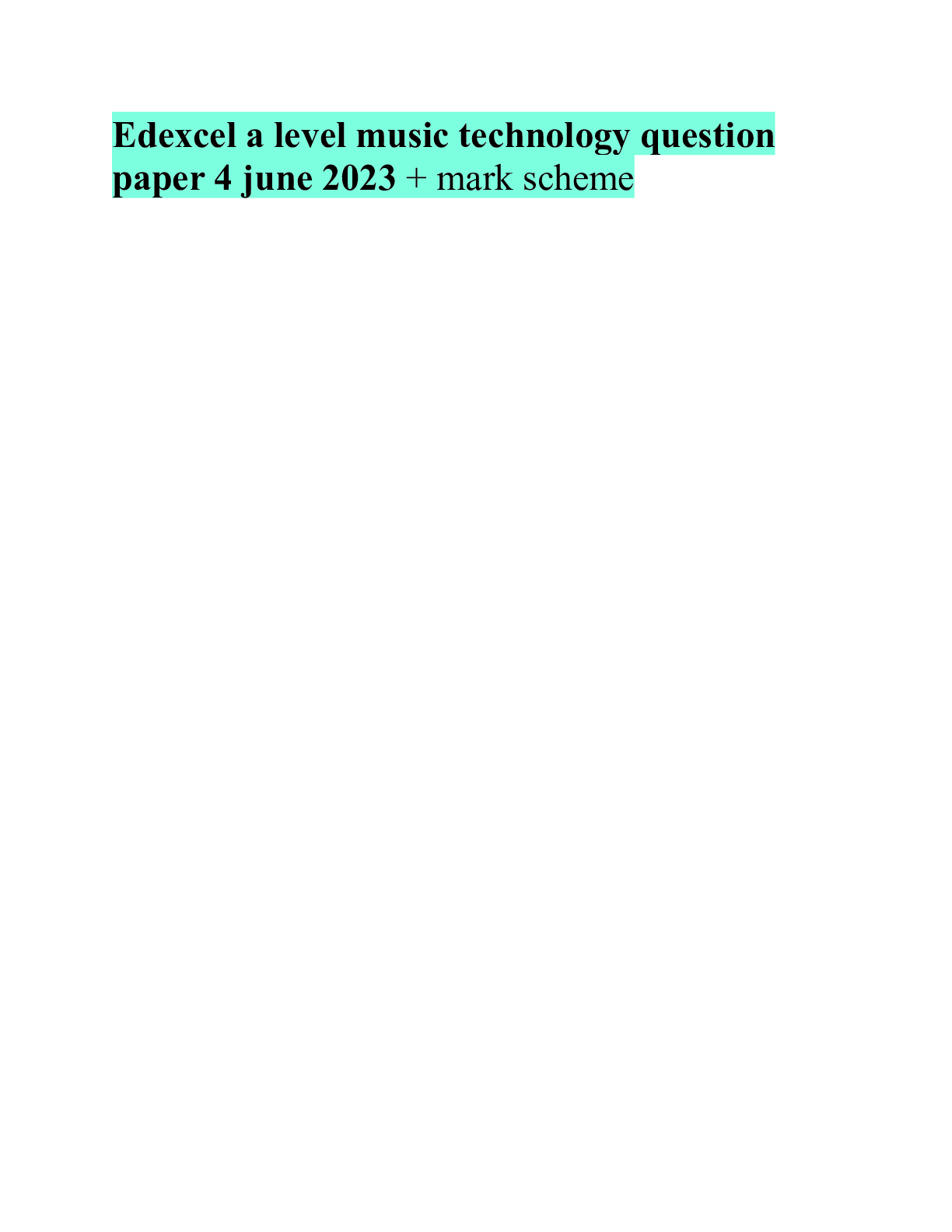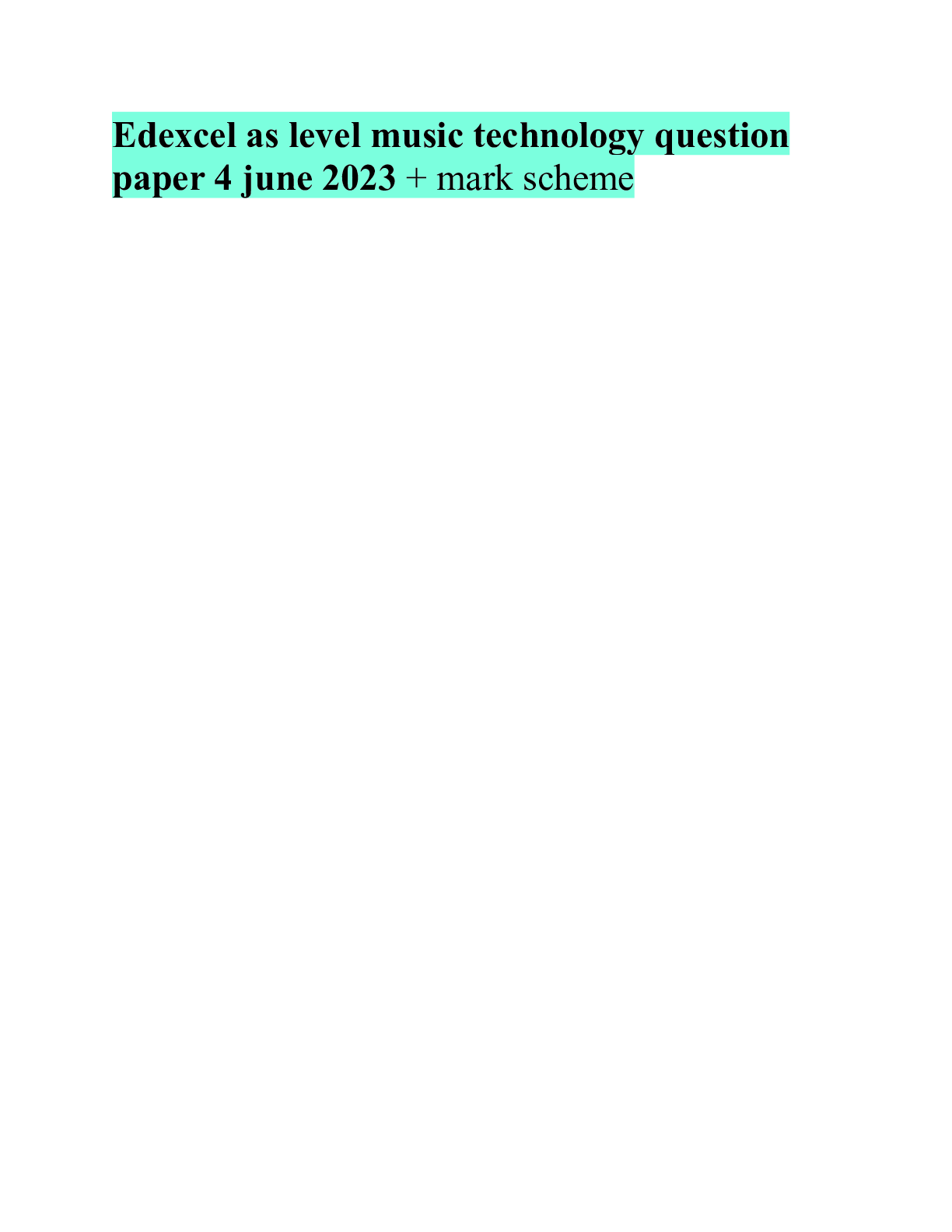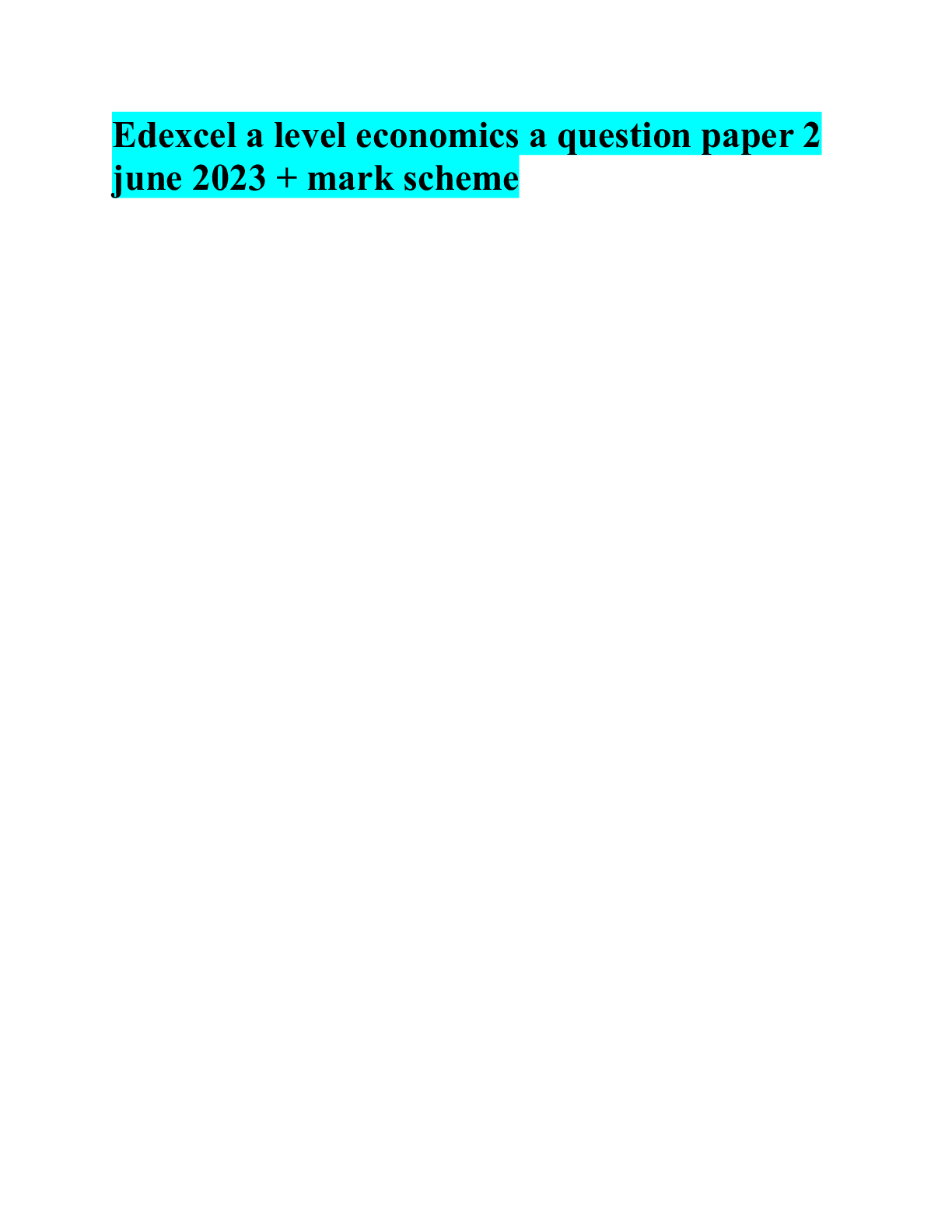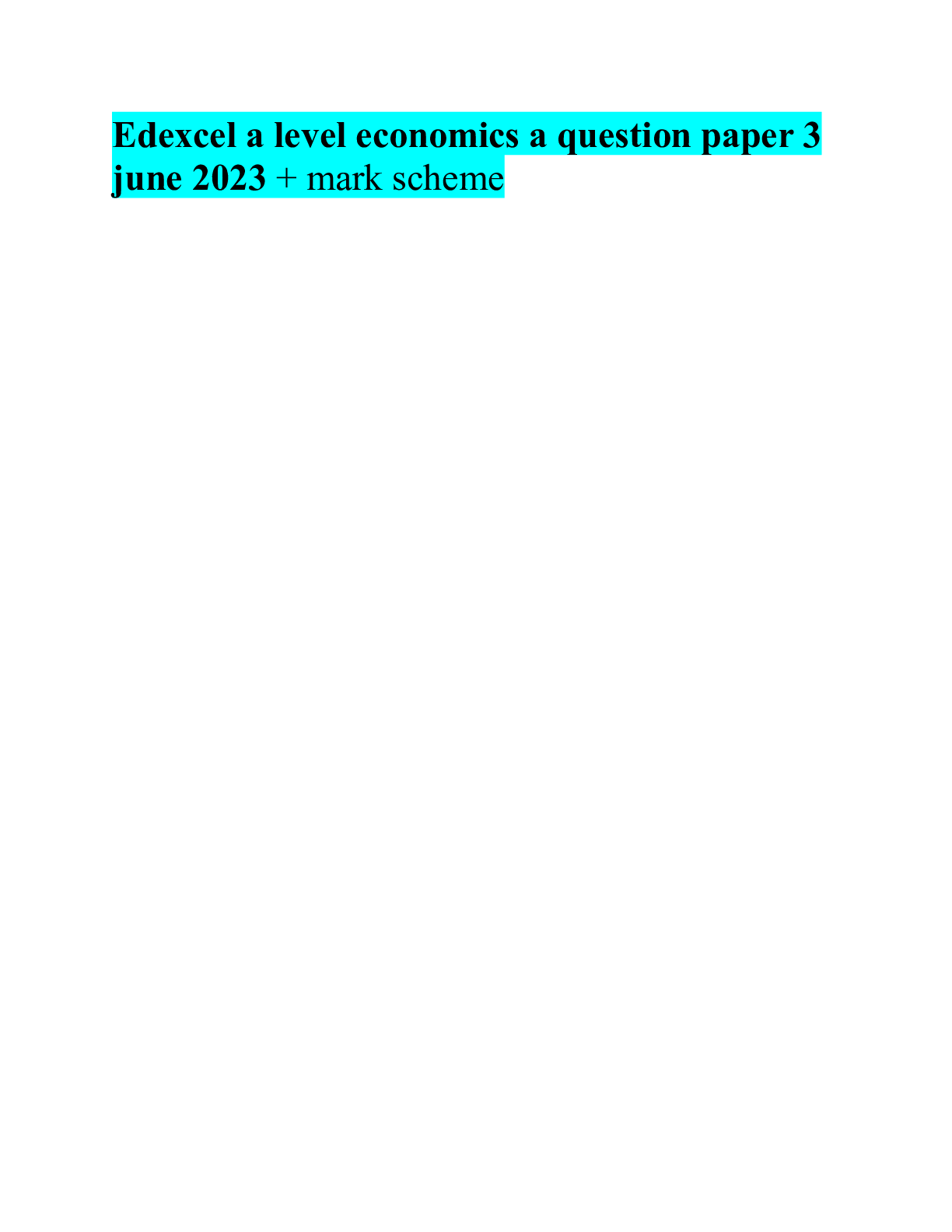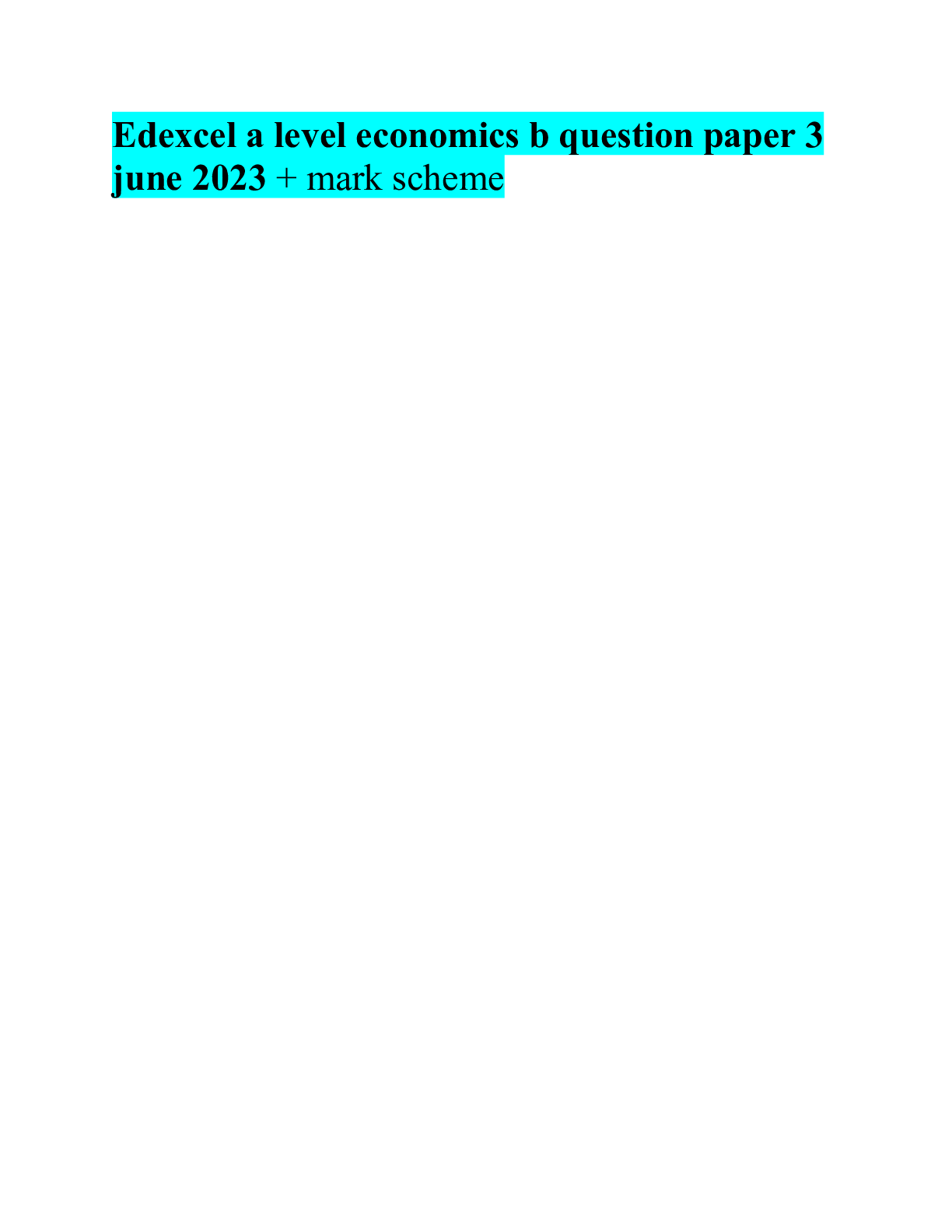Mathematics > Edexcel > Edexcel gcse math s higher paper 2 june 2023 + mark scheme (All)
Edexcel gcse math s higher paper 2 june 2023 + mark scheme
Document Content and Description Below
Mark Scheme (Results) Summer 2023 Pearson Edexcel GCSE In Mathematics (1MA1) Higher (Calculator) Paper 2HEdexcel and BTEC Qualifications Edexcel and BTEC qualifications are awarded by Pearson, th... e UK’s largest awarding body. We provide a wide range of qualifications including academic, vocational, occupational and specific programmes for employers. For further information visit our qualifications websites at www.edexcel.com or www.btec.co.uk. Alternatively, you can get in touch with us using the details on our contact us page at www.edexcel.com/contactus. Pearson: helping people progress, everywhere Pearson aspires to be the world’s leading learning company. Our aim is to help everyone progress in their lives through education. We believe in every kind of learning, for all kinds of people, wherever they are in the world. We’ve been involved in education for over 150 years, and by working across 70 countries, in 100 languages, we have built an international reputation for our commitment to high standards and raising achievement through innovation in education. Find out more about how we can help you and your students at: www.pearson.com/uk Summer 2023 Question Paper Log Number P75150A Publications Code 1MA1_2H_2306_MS All the material in this publication is copyright © Pearson Education Ltd 2023General marking guidance These notes offer general guidance, but the specific notes for examiners appertaining to individual questions take precedence. 1 All candidates must receive the same treatment. Examiners must mark the lst candidate in exactly the same way as they mark the first. Where some judgement is required, mark schemes will provide the principles by which marks will be awarded; exemplification/indicative content will not be exhaustive. When examiners are in doubt regarding the application of the mark scheme to a candidate’s response, the response should be sent to review. 2 All the marks on the mark scheme are designed to be awarded; mark schemes should be applied positively. Examiners should also be prepared to award zero marks if the candidate’s response is not worthy of credit according to the mark scheme. If there is a wrong answer (or no answer) indicated on the answer line always check the working in the body of the script (and on any diagrams), and award any marks appropriate from the mark scheme. Questions where working is not required: In general, the correct answer should be given full marks. Questions that specifically require working: In general, candidates who do not show working on this type of question will get no marks – full details will be given in the mark scheme for each individual question. 3 Crossed out work This should be marked unless the candidate has replaced it with an alternative response. 4 Choice of method If there is a choice of methods shown, mark the method that leads to the answer given on the answer line. If no answer appears on the answer line, mark both methods then award the lower number of marks. 5 Incorrect method If it is clear from the working that the “correct” answer has been obtained from incorrect working, award 0 marks. Send the response to review for your Team Leader to check. 6 Follow through marks Follow through marks which involve a single stage calculation can be awarded without working as you can check the answer, but if ambiguous do not award. Follow through marks which involve more than one stage of calculation can only be awarded on sight of the relevant working, even if it appears obvious that there is only one way you could get the answer given.7 Ignoring subsequent work It is appropriate to ignore subsequent work when the additional work does not change the answer in a way that is inappropriate for the question or its context. (eg an incorrectly cancelled fraction when the unsimplified fraction would gain full marks). It is not appropriate to ignore subsequent work when the additional work essentially makes the answer incorrect (eg. incorrect algebraic simplification). 8 Probability Probability answers must be given as a fraction, percentage or decimal. If a candidate gives a decimal equivalent to a probability, this should be written to at least 2 decimal places (unless tenths). Incorrect notation should lose the accuracy marks, but be awarded any implied method marks. If a probability fraction is given then cancelled incorrectly, ignore the incorrectly cancelled answer. 9 Linear equations Unless indicated otherwise in the mark scheme, full marks can be gained if the solution alone is given on the answer line, or otherwise unambiguously identified in working (without contradiction elsewhere). Where the correct solution only is shown substituted, but not identified as the solution, the accuracy mark is lost but any method marks can be awarded (embedded answers). 10 Range of answers Unless otherwise stated, when an answer is given as a range (eg 3.5 – 4.2) then this is inclusive of the end points (eg 3.5, 4.2) and all numbers within the range 11 Number in brackets after a calculation Where there is a number in brackets after a calculation eg 2 × 6 (=12) then the mark can be awarded either for the correct method, implied by the calculation or for the correct answer to the calculation. 12 Use of inverted commas Some numbers in the mark scheme will appear inside inverted commas eg “12” × 50 ; the number in inverted commas cannot be any number – it must come from a correct method or process but the candidate may make an arithmetic error in their working. 13 Word in square brackets Where a word is used in square brackets eg [area] × 1.5 : the value used for [area] does not have to come from a correct method or process but is the value that the candidate believes is the area. If there are any constraints on the value that can be used, details will be given in the mark scheme. 14 Misread If a candidate misreads a number from the question. eg uses 252 instead of 255; method or process marks may be awarded provided the question has not been simplified. Examiners should send any instance of a suspected misread to review.Guidance on the use of abbreviations within this mark scheme M method mark awarded for a correct method or partial method P process mark awarded for a correct process as part of a problem solving question A accuracy mark (awarded after a correct method or process; if no method or process is seen then full marks for the question are implied but see individual mark schemes for more details) C communication mark awarded for a fully correct statement(s) with no contradiction or ambiguity B unconditional accuracy mark (no method needed) oe or equivalent cao correct answer only ft follow through (when appropriate as per mark scheme) sc special case dep dependent (on a previous mark) indep independent awrt answer which rounds to isw ignore subsequent workingPaper: 1MA1/2H Question Answer Mark Mark scheme Additional guidance 1 (a) 1.765(2...) M1 for fully evaluating the numerator or denominator, eg 18.3... or 10.4(1) or answer of 1.76 or 1.77 or digits 1765(2...) A1 for 1.765(2......) Answer must be given to at least 3 decimal places rounded or truncated. Check first 4 significant figures only. (b) 1.6 B1 for 1.6 oe 2 2 × 2 × 3 × 5 M1 for a complete method to find prime factors, could be shown on a complete factor tree, with no more than one error or by division by prime factors with no more than one error or for 2, 2, 3, 5 (1) Condone the inclusion of 1 for the method mark A1 for 2 × 2 × 3 × 5 oe Accept 22 × 3 × 5 3 No with reason C1 for No and valid reason, eg compares 1 3 with 1 2 or 16 (with 24) Acceptable examples No, 1 3 are red not 1 2 There are 16 red counters (not 24) No as she has used the ratio 1:1 (not 1:2) Incorrect as it is 16 : 32 No as she should divide by 3 (as 1 + 2 = 3) No as they would both be 24 so it doesn’t fit in the ratio 1 : 2 No because 24 + 48 = 72 Not acceptable examples Yes, … No as the number of red counters would be lower There is 1 red for every 2 bluePaper: 1MA1/2H Question Answer Mark Mark scheme Additional guidance 4 (a) 4 B1 cao (b) correct diagram C2 for a fully correct diagram, eg (C1 for drawing a line from –4 to 1 or (indep) for an open circle at 1 or (indep) for a closed circle at –4) Condone arrow heads or line ending to denote the ‘end’ of the line (c) g ˂ 25 M1 for a correct first step, eg adding 4 to both sides, eg 2 5 g < 6 + 4 or multiplying throughout by 5, eg 2g – 4 × 5 < 6 × 5 or dividing throughout by 2, eg Allow use of any inequality or as an equation for both method marks M1 for a correct second step, eg 2g < “10” × 5 or [Show More]
Last updated: 3 months ago
Preview 1 out of 51 pages
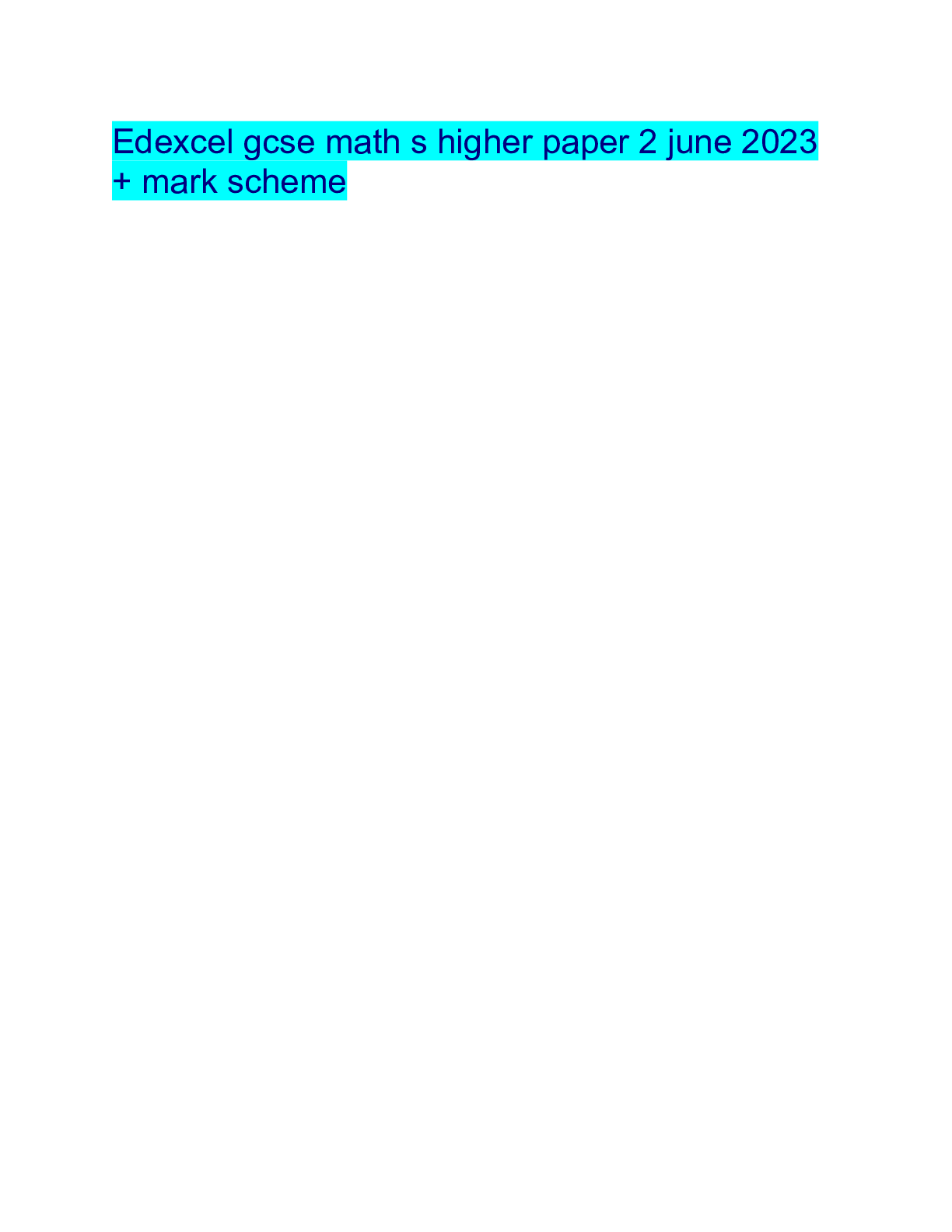
Reviews( 0 )
Document information
Connected school, study & course
About the document
Uploaded On
Jan 16, 2024
Number of pages
51
Written in
Additional information
This document has been written for:
Uploaded
Jan 16, 2024
Downloads
0
Views
14

.png)
.png)
.png)
.png)
.png)
.png)
.png)
.png)
.png)
.png)
.png)
.png)
.png)
.png)


